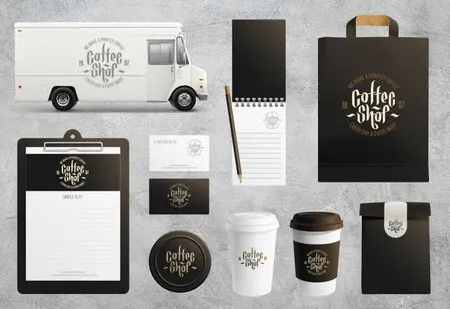Table of Contents
Introduction
In a world where digital advertising dominates the marketing landscape, one traditional method continues to hold its ground branded merchandise. Companies are leveraging tangible items to create lasting impressions, foster brand recognition, and enhance customer loyalty. This blog post delves into why branded merchandise remains a potent marketing tool, exploring its evolution, psychological impacts, versatility, cost-effectiveness, and more.
The Evolution of Branded Merchandise
Branded merchandise has come a long way since its inception in the early 20th century when companies first began printing their logos on everyday items for promotional purposes. The introduction of new materials and technologies has expanded the range of products available for branding. From pens and mugs to tech gadgets and sustainable products, businesses now have an array of options that can cater to various target demographics.
Today’s consumers are not only looking for quality but also value and meaning in their purchases. As brands like Totally Branded continue to innovate within this space, the relevance and effectiveness of promotional products remain unchallenged.
Psychological Impact of Branded Items
The psychology behind branded merchandise is a significant factor in its effectiveness as a marketing tool. When consumers receive a branded item as a gift or promotional giveaway, it creates a sense of reciprocity; they feel valued and appreciated by the brand. This emotional connection can lead to increased brand loyalty.
Research indicates that people are more likely to remember brands that have provided them with tangible items compared to those they have only seen in digital formats. The sensory experience associated with physical goods such as touch or smell can evoke memories and emotions, reinforcing brand recall.
Versatility in Marketing Strategy
One of the standout features of branded merchandise is its versatility across various marketing channels and strategies. Here are several ways companies can utilize branded items:
1. Trade Shows: Businesses often give away branded merchandise at trade shows to attract potential customers and encourage booth visits.
2. Corporate Events: Providing employees or clients with branded gifts during corporate events fosters goodwill and strengthens relationships.
3. Social Media Campaigns: Brands can leverage social media by encouraging followers to share photos with their branded items, amplifying reach through user-generated content.
4. Loyalty Programs: Offering exclusive branded merchandise as rewards for loyal customers can incentivize repeat business.
By integrating branded merchandise into diverse marketing strategies, companies can reach broader audiences while solidifying their brand identity.
Cost-Effectiveness of Branded Merchandise
While some might view branded merchandise as an additional expense, it often proves to be one of the most cost-effective marketing strategies available. The long-lasting nature of many promotional items means that they provide ongoing exposure for years after they are distributed.
Statistics show that promotional products can result in lower cost-per-impression than other forms of advertising like television or digital ads. For example, while a television commercial may reach thousands in mere seconds, a well-received item such as a tote bag could be seen by hundreds every day over several years.
When sourced strategically through providers like Totally Branded, companies can balance quality with budgetary constraints without sacrificing impact.
Strengthening Brand Loyalty
Branded merchandise plays a crucial role in cultivating customer loyalty. When consumers receive high-quality products that they appreciate and use regularly, they form a positive association with the brand that provided them.
Moreover, consistent exposure to branded items reinforces brand identity and encourages consumers to choose that brand over competitors when making purchasing decisions. Brands that engage their customers through meaningful merchandise tend to see higher levels of repeat business.
Providing thoughtful items tailored to customer interests can further enhance this loyalty, ensuring that consumers feel heard and valued by the company.
Effective Audience Engagement
In today’s fast-paced digital world, engaging an audience effectively can be challenging. Branded merchandise acts as an interactive tool that invites participation from consumers rather than simply delivering information passively.
Promotional items can encourage interaction in several ways:
1. Contests and Giveaways: Brands can host contests where participants must share content featuring their products for a chance to win exclusive merchandise.
2. Surveys and Feedback: Offering branded items as incentives for completing surveys can provide valuable consumer insights while boosting engagement.
3. Experiential Marketing: Brands often create immersive experiences where attendees receive branded items that enhance their experience while promoting the brand’s image.
Through these methods, businesses create memorable interactions that resonate with consumers beyond traditional advertising methods.
Read more: Brand Awareness Marketing
Case Studies: Successful Implementation
Examining real-world examples provides insight into how effective branded merchandise can be when executed correctly.
A notable case is Coca-Cola’s “Share a Coke” campaign where personalized bottles were distributed widely. This unique approach encouraged consumers to seek out bottles with their names or friends’ names on them, generating excitement around the product while driving substantial sales increases.
In another instance, Totally Branded partnered with a large tech firm to develop eco-friendly promotional materials for an upcoming conference. These items not only aligned with the company’s sustainability goals but also generated positive conversations among attendees about both the tech firm’s values and Totally Branded’s innovative solutions.
Both cases illustrate how well-planned branded merchandise strategies lead to increased visibility and positive consumer engagement.
The Role of Quality in Merchandise
Quality plays an essential role in the success of any branded merchandise strategy. Poor-quality items can backfire; rather than promoting your brand positively, they may lead to negative associations.
Investing in high-quality products not only enhances brand perception but also demonstrates a commitment to excellence. When consumers receive durable and functional items, they are more likely to use them regularly creating ongoing exposure for your brand.
Brands must choose reputable suppliers like Totally Branded who prioritize quality alongside innovation in their offerings to ensure that every promotional item reflects the company’s core values effectively.
As brands look toward future marketing trends, embracing high-quality branded merchandise will remain paramount for creating lasting impressions on consumers.
The continued relevance of branded merchandise as an effective marketing tool lies in its ability to adapt with changing consumer preferences while maintaining core principles of engagement, loyalty, and quality at its heart. By leveraging tangible items wisely within diverse marketing strategies, brands can achieve remarkable results that extend far beyond initial impressions creating pathways for sustained success in competitive markets.
Apart from that if you want to know about Branded Notebooks then please visit our Digital Marketing Category.
















